Please ignore the graphed lines, those are irrelevant to the question, it's the graph itself that's relevant.
I see this type of graph used all the time, between multiple manufacturers and device types. It's a plotted graph, x * y, where x could be time, and y some value, or vis-versa or a mix of different variables. While I can extrapolate the approximate value of a point between two marked values (ex: The 1 hour and the 10 hour), I still don't know what the in between values should be.

Is each line half between the next highest up? For example. Half way between 100 to 1000 is 500. So that next line up from 100 is 500. Then half way between 500 and 1000 is 750. Then 875, etc? x = y + ((y - z) / 2), where Y is the next marked up, and Z is the last value to the left?
Or is it a simple next value up. 100, 200, 300, etc? If so, why the scaling to the distance instead of linear graph?
And most importantly, do these type of scaled graphs have a specific name or standard attached to them?
